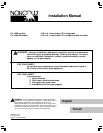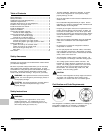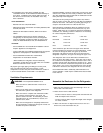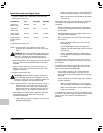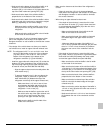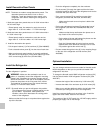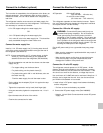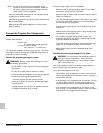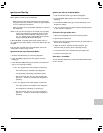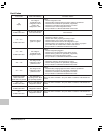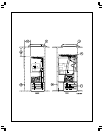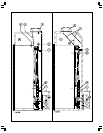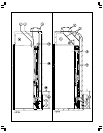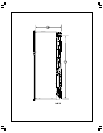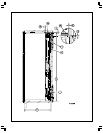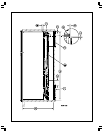
Installation Manual 3
Ventilation Requirements
WARNING: The completed installation must:
- Make sure there is sufficient intake of fresh air for
combustion.
- Make sure the living space is completely isolated from
the combustion system of the refrigerator.
- Make sure there is complete and unrestricted ventila-
tion of the flue exhaust which, in gas mode, can
produce carbon monoxide. The breathing of carbon
monoxide fumes can cause dizziness, nausea, or in
extreme cases, death.
- Make sure the refrigerator is completely isolated from
its heat generating components through the correct use
of baffles and panel construction.
The installation must obey these standards and this
“Installation Manual” for the NORCOLD limited warranty to
be in effect. Installation must conform with local codes. In
the absence of local codes, the installation must obey
these standards:
In the United States:
- National Fuel Gas Code, ANSI Z223.1.
- Manufactured Home Construction and Safety Standard, Title
24 CFR, Part 32-80.
- Standard for Recreational Vehicles, RVIA A119.2 latest
edition.
- For installations which need an electric outlet that is
energized by an external power source, the refrigerator
must be electrically grounded as written in local or state
codes, the National Electrical code, and ANSI/NFPA 70.
In Canada:
- Current CGA B149.1 and CGA B149.2 Installation code for
Propane Appliances and Equipment.
- Current CSA Z240.4.2 Installation Requirement for Propane
Appliances and Equipment in Recreational Vehicles.
- Current CSA Z240.6.2/C22.2 No. 148 Electrical
Requirement for Recreational Vehicles.
- When installed, the refrigerator must be electrically
grounded in accord with local or state codes, the Canadian
Electrical Code C22.2. Parts 1 and 2.
All propane gas supply piping and fittings must obey local,
state, and national codes about type and size. These
components must also obey the current NFPA 501C section 2-
4, and in Canada with the current CAN 1-6.10 Standard.
Certified installation needs one lower intake vent and one upper
exhaust vent. Install the vents exactly as written in this manual.
Any other installation method voids both the certification and the
factory warranty of the refrigerator.
The bottom of the opening for the lower intake vent, which is
also the service access door, must be even with or immediately
below the floor level. This allows any leaking propane gas to
escape to the outside and not to collect at floor level.
CSA International certification allows the refrigerator to have
zero (0) inch minimum clearance at the sides, rear, top, and
bottom. While there are no maximum clearances specified for
certification, the following maximum clearances are necessary
for correct refrigerator performance:
Bottom 0 inch min. 0 inch max.
Each Side 0 inch min. 1/2 inch max.
Top 0 inch min. 1/4 inch max.
Rear 0 inch min. 1 inch max.
These clearances plus the lower and upper vents allow the
natural air draft that is necessary for good refrigeration. Cooler
air comes in through the lower vent, goes up around the
refrigerator coils where it removes the excess heat from the
refrigerator components, and goes out through the upper vent.
The refrigerator also has two thermostat controlled fans to
move air across the cooling system. These fans turn on when
the condenser fin temperature at the thermostat is about 130° F
or higher and only when the refrigerator controls are on. These
fans turn off when the condenser fin temperature at the thermo-
stat is about 115° F or less. Even with these fans, if the air flow
is blocked or decreased, the refrigerator will not cool correctly.
Each NORCOLD model is certified by CSA International for
correct ventilation. Install only the certified vents that are listed
in this manual.
Assemble the Enclosure for the Refrigerator
1. Make sure the enclosure is 63 1/4 inches high x 32 11/16
inches wide x 24 inches deep.
2. Make sure the floor is solid and level:
- The floor must be metal or a wood panel and extend the full
width and depth of the enclosure.
- The floor must be able to support the weight of the refrigera-
tor and its contents.
3. Make sure there are no adjacent heat sources such as a
furnace vent, a hot water heater vent, etc.



